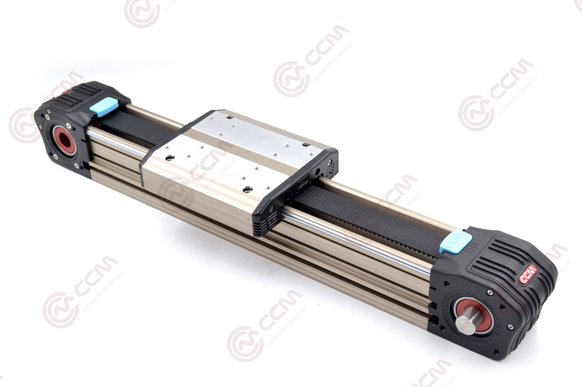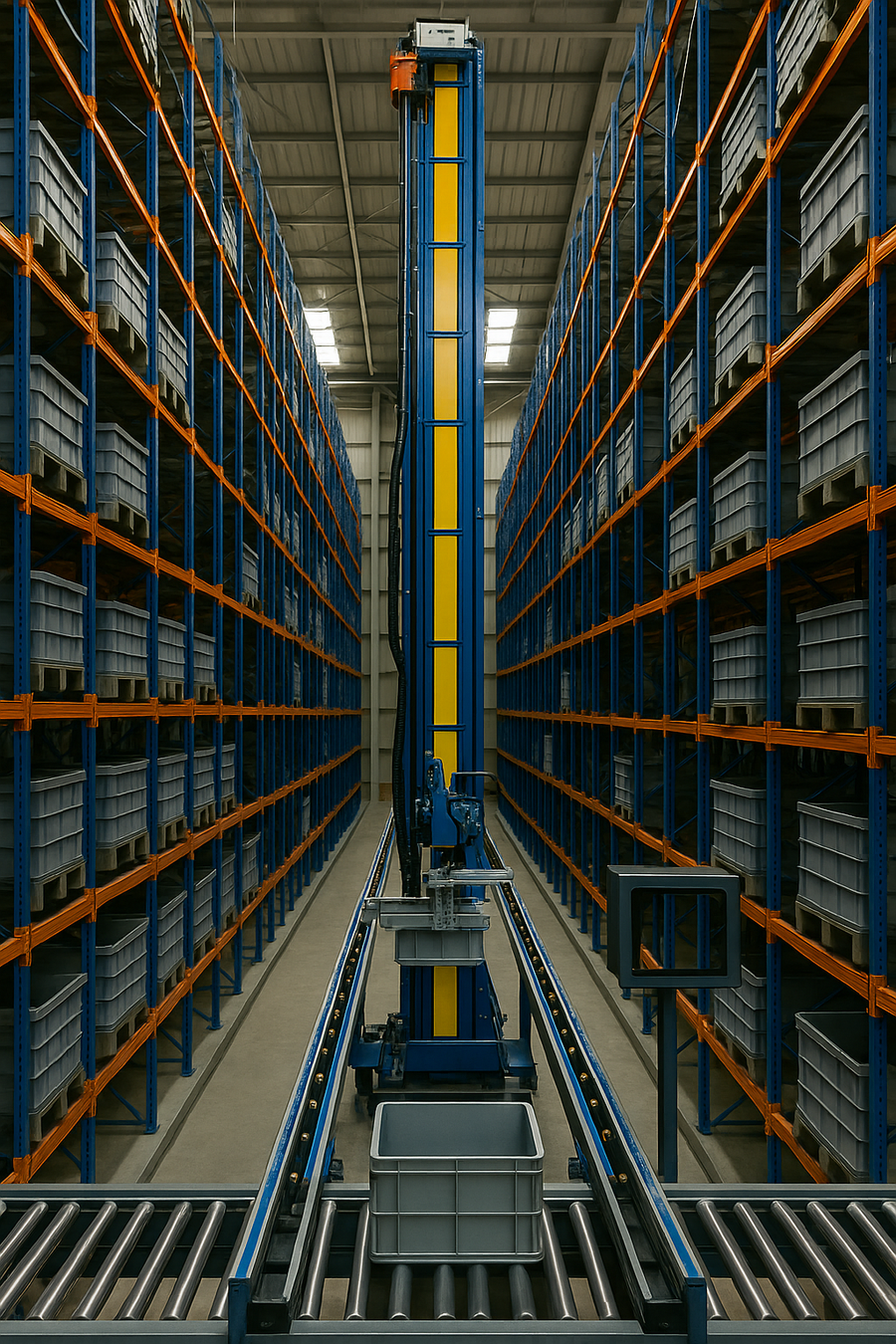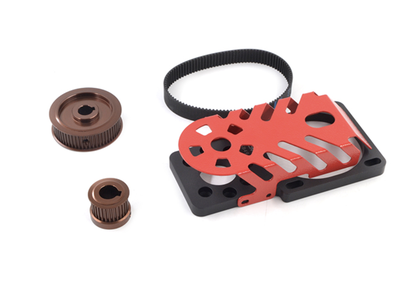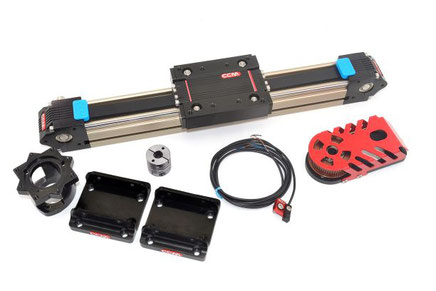L45-20 linear guide rail for Automated Storage and Retrieval Systems

Looking for the Right Linear Guide Rail for Your Application?
We understand how overwhelming it can be to choose the right linear guide rail when so many options online look similar and claim high performance. That’s why we’ve made it simple for you.
You have two clear options:
1. Stay here and check the technical specifications of our precision-engineered linear guide rail modules.
or check
2. How to Choose the Right Belt-Driven Linear Rail—Without Wasting Time or Money. Avoid common pitfalls, decode tech specs, and find the rail that fits your application perfectly.
Technical parameters of L45-20
-
Guide Width: 45 mm
-
Max Load: 20 kg
-
Pitch: 80 mm
-
Synchronous Wheel Spec: STD5M-16Z
-
Recommended Speed: ≤ 1.5 m/s
-
Customized Length: Up to 6 meters
-
Input Torque: ≤ 3 N·m
-
Belt Spec: PU-5M-15 (steel wire)
-
Straightness: 0.05 / 300 mm
-
Applicable Motors:
-
Stepper Motor: Nema 17 (Direct Connection)
-
Servo Motor: 100W (Direct Connection); 200W/400W (DC/Speed Reducer Set)
-
-
Suggested Length Adjustment: Effective stroke + 280 mm (with length increments of 50 mm, such as 1000 mm, 1050 mm, 1100 mm)
This summary encapsulates the technical details for the L45-20 linear motion module. If you require the full data sheet of the technical parameters, please contact us.
Boost Your ASRS Efficiency with the Power of Linear Guide Rails

Advantages of Linear Guide Rails in Automated Storage and Retrieval Systems
In today’s fast-paced manufacturing and warehousing environments, Automated Storage and Retrieval Systems (ASRS) are becoming essential for improving efficiency and reducing labor costs. One key component that drives the success of ASRS is the use of linear guide rails. These systems play a critical role in the movement and positioning of automated machinery, ensuring smooth, precise, and reliable operations. Here’s how linear guide rails are transforming Automated Storage and Retrieval Systems for the better.
1. Precision and Accuracy
One of the primary benefits of linear guide rails in an ASRS is the precision they offer. These rails allow automated machinery to move along predefined paths with extreme accuracy, ensuring that goods are stored and retrieved at the correct locations. This precision is crucial in minimizing errors, especially when handling high-value or delicate products.
Tip: For high-precision applications, choose linear guide rails with minimal friction and backlash to achieve the highest levels of accuracy in your ASRS.
2. Increased Speed and Throughput
With linear guide rails, the movement of robots or conveyors in ASRS is smoother and faster. This increased speed leads to faster storage and retrieval of goods, enhancing the overall throughput of the system. The efficient motion control provided by linear guides allows your system to handle more tasks in less time, ultimately improving the efficiency of your warehouse or factory.
Tip: Pair linear guide rails with high-speed motors for a faster ASRS that reduces bottlenecks and improves overall performance.
3. Enhanced Durability and Reliability
In an ASRS, durability and reliability are paramount, as the system operates continuously under heavy loads. Linear guide rails are designed to withstand these demanding conditions without significant wear and tear. They can support heavy weights while maintaining smooth motion over long periods, minimizing downtime and reducing maintenance costs.
Tip: Regularly check the alignment and lubrication of your linear guide rails to ensure optimal performance and longevity, especially in high-load applications.
4. Space Efficiency
Linear guide rails are compact, allowing for the design of more space-efficient ASRS. Their ability to move machinery and robots precisely along multiple axes enables the creation of systems that make better use of available space, maximizing storage capacity within a given footprint.
Tip: Optimize your ASRS design by integrating linear guide rails to make use of vertical space and reduce the physical footprint of your system.
5. Low Maintenance Requirements
The linear guide rails used in ASRS are built for long-lasting, low-maintenance performance. These rails typically require minimal maintenance, reducing the frequency of system downtime for repairs or adjustments. This makes them ideal for systems that need to run continuously with minimal interruptions.
Tip: Use high-quality rails with built-in lubrication features to reduce friction and wear, keeping maintenance requirements to a minimum.
6. Flexibility in Design
Linear guide rails offer flexibility in terms of customization. Depending on the needs of your ASRS, you can choose rails of various lengths, configurations, and load capacities. This adaptability allows for the integration of linear guides into a wide range of Automated Storage and Retrieval Systems, from small-scale systems to large, complex warehouses.
Tip: Work with an expert to tailor the linear guide rail system to fit the unique needs of your ASRS, ensuring optimal performance and capacity.
Conclusion:
Integrating linear guide rails into Automated Storage and Retrieval Systems offers numerous
advantages, from precision and increased speed to durability and space efficiency. With minimal maintenance and exceptional reliability, these rails enhance the overall functionality and
performance of your ASRS, leading to more efficient operations and reduced costs. Whether you're handling small parts or large pallets, linear guide
rails are a must-have component for optimizing your warehouse automation.
Other Models
Accesories for linear guide rails


